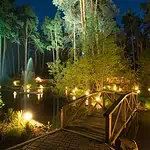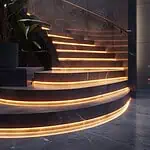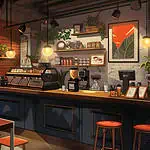Within the hospitality industry, ambiance carries a lot of importance. It is what differentiates a premium hotel from an ordinary one. Hotels offering a better atmosphere can price their rooms higher and thus earn more profit than those not focused on it. To provide a premium ambiance, a hotel needs brilliant aesthetics and lighting to complement it.
You cannot just implement a lighting solution without thinking it through and expecting the hotel to look incredible to implement a lighting solution. The expensive furniture and interior design require just as good lighting to offer that premium look.
So, if you are looking for a solution for hotel lighting, this article has been put together for you. It will explain everything you should know about before implementing a lighting solution.
What is Hotel Lighting?
Hotel lighting, in simplest terms, means lighting a hotel with appropriate solutions. However, it is a very simplistic description and needs to account for the intricacies involved in the process. You have to consider that different parts of hotels are designed for other purposes; thus, the lighting requirements of these areas also vary. While lighting a hotel, you must do more than install the same fixtures in all the hotels because that will make it look dull and unappealing.
You must understand that the lighting requirements of the rooms, lobby, hallways, staircases, and reception are different. So, you must light them appropriately. Great hotel lighting will encourage more visitors and create more opportunities to earn profit.
Importance of Hotel Lighting
As discussed earlier, the lighting in the hotel is just as important as its interior. Imagine spending thousands of dollars on interior design but forgetting the basics of lighting. Despite the hefty investment, the bad lighting will make the hotel look dull. In contrast, good lighting will encourage more visitors, making them feel relaxed and cozy. Furthermore, the lights will highlight the elements of interior designs you want to flaunt to the customers.
With a decent interior and incredible lighting, the hotel will be ranked as one of the best places to stay in the locality.
Another important factor to consider is the amount you will save with decent light. For example, lighting the hotel with incandescent bulbs will drive energy bills and increase operational costs. In contrast, choosing a cost-effective solution such as LEDs will decrease energy bills and significantly reduce the hotel’s operating costs. You can invest the amount saved by lighting solution into some other productive part of the hotel with a higher potential to yield profit.
How Does Hotel Lighting Add Value
Lighting a hotel appropriately will drive more customers toward your business and generate more profit. Let’s take a look at exactly how good lighting makes it possible.
1. Improves Mood
Lighting has a significant impact on the mood of people. If you have rather dull lighting in the hotel, it will make the guests feel bored. Even if your hotel has brilliant interior design, bad lights will stop the guest from observing and appreciating the details of the design. Furthermore, good light will make the place ‘Instagram-worthy”, which is one of the key features most tourists seek in areas they want to stay.
Another point is that humans remember a place by how a particular area made them feel. So, if a hotel has helped guests maintain a better mood throughout their stay, they are likely to recommend it to their friends and family.
2. Activate Senses
In addition to making the interior look terrible, the sub-par lighting makes the visitors feel drowsy. It is because our bodies produce a hormone called ‘melatonin,’ responsible for initiating sleep. This hormone is triggered in dark spaces and makes us tired and sleepy. Thus, guests will always feel bored without appropriate lighting in hotel spaces. In contrast, good light will stop melatonin production and make the guest feel active at all times.
3. Offers Convenience
With adequate lighting, the guest will feel more comfortable, especially when they are on work-related trips and have to get some work done in their rooms. Furthermore, dull lighting can make it difficult for visitors to dress appropriately before going out. This creates a wrong impression on visitors, discouraging them from revisiting the facility. In contrast, good light creates an atmosphere that allows the guests to focus on what they are doing. Consequently, it leaves an excellent impression, which makes them more likely to recommend your hotel to others.
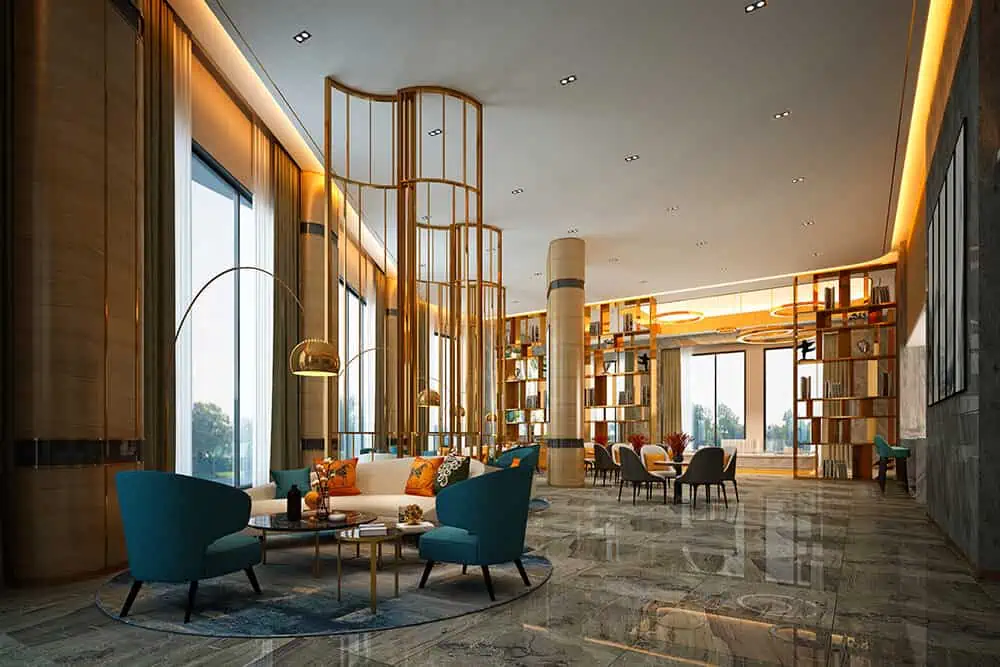
Types of Hotel Lights
While looking for hotel lights, you will come across several options. The most popular and notable are LEDs, Halogen lights, and incandescent bulbs. Each of these lights has its benefits and a fair share of disadvantages. You must evaluate the options and pick the most suitable hotel.
Incandescent bulbs are generally not used in hotels, mainly because they are expensive to operate and must be replaced every once in a while. The only benefit of using these fixtures in hotels is their low upfront costs.
Halogen bulbs are the advanced versions of incandescent bulbs and are a little more cost-effective. LEDs, on the other hand, outshine both of these options. These fixtures are the most cost-effective solutions and offer much higher durability. Furthermore, LEDs come in various designs, making them more flexible and allowing you to implement a great design.
The only drawback of the LEDs is their higher cost. However, even with the higher prices, LEDs will offer more benefits in the long run. You will save a decent amount on energy bills and be spared from the hassle of changing the fixtures every couple of months.
For more information, you can read Halogen vs. LED Bulbs: How To Choose and Advantages and Disadvantages of LED Lighting.
Things To Know Before Lighting a Hotel
Now that you are familiar with the basics of hotel lighting let’s look at some essential factors you must consider while selecting lights for your hotel.
1. Try to Reduce Glares
While lighting a hotel, make sure that you are staying moderate. Having too much light in the interior can produce glare and strain the eyes of the visitors. While the light is enough to make all interior details visible, you must ensure that it is not too bright to produce any glare. The lux light level recommended for hotels is around 150, but it is not a universal rule. The number can change drastically based on the amount of natural light that comes into the interior.
You should also look for anti-glare solutions. They might come with a higher price tag, but the investment will be worth it, considering the benefits you will get from them.
2. Distribute Lights According To the Requirement
The different parts of hotels will have varying light requirements, which warrant an appropriate distribution. You cannot just light one hotel area too brightly and leave the others in the dark. You should balance the hotel’s lights according to the requirements of a particular area. For example, you cannot use the same lights in hallways that you will use in the bedrooms. It is because the requirements for bedrooms are very different from the hallways.
3. Color Temperature
Color temperature is one of the most critical factors when lighting a hotel. It is measured on a kelvin scale and indicates what colors light produces. The different light temperatures have other effects on the moods of the occupants. Generally, the color temperature ranges between 1,000 to 10,000 K. Lights under 3,000K produce warm light, creating an inviting and cozy feeling. In contrast, the lights with a core temperature of more than 4,000 emit cool light and mimic natural light. These lights make the occupants feel more active.
You should use a light temperature of more than 4,000 in areas meant for work. However, when it comes to lighting bedrooms and other spaces where you want to create a cozy vibe, lights under 4,000 work the best.
For more information, you can read Best Color Temperature for LED Office Lighting and What Color LED Light Is Best For Study, Sleep, & Game.
4. Color Rendering Index
The color rendering index is also as important as the color temperature, but it has a different role. It measures how effectively artificial light can make the colors look as accurate as they look under natural light. It is measured on a scale from 0-100. As the CRI gets closer to 100, the colors will appear precisely how they look under natural light.
It is not to say that you must use lights with higher CRI in all parts of hotels. Some features of the interior will look better with lower CRI. You should understand how CRI affects the lighting in your hotel and select the fixtures appropriately.
For more information, you can read TM-30-15: A New Method for Measuring Color Rendition.
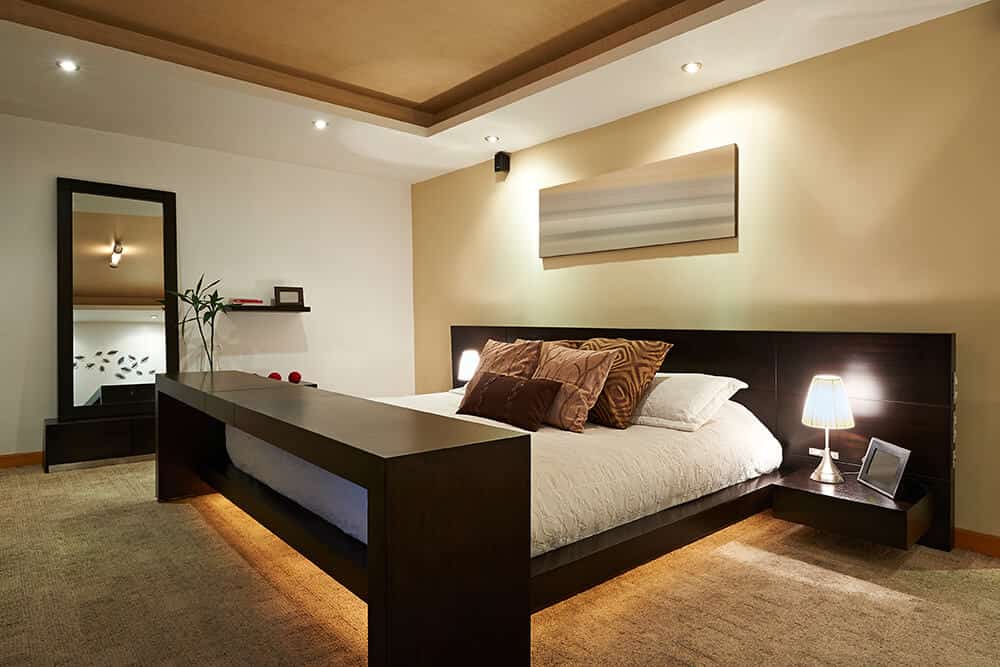
How To Light A Hotel
Different hotels will have varying requirements when it comes to lights. However, the fundamentals will remain the same regardless of the size and interior of the hotels. Let’s take a look at how you can light the hotel effectively.
1. Examine the Layout of the Hotel
The first thing to do while lighting a hotel is to examine the layout of the hotel and understand how you want the lighting to work. If you already have some lights in place, it will become even easier to identify the shortcoming and rectify them in the new design. You should plan precisely how you want the hotel to look. Once you have that blueprint, you can proceed to the next steps.
2. Prioritize Efficiency
The fundamental purposes of the lights in the hotel are to improve utility and ambiance. You can achieve both goals by opting for energy-efficient solutions such as LEDs. Such lights are the most efficient options because they save energy and offer much better durability. Furthermore, you are likely to find a range of variety within LEDs which will help you reproduce the blueprint you have in your mind.
3. Maintain a Theme
Once you have finalized the design and picked the appropriate light type, you must select a theme for your hotel lighting. It must be unique and have a personality of its own. The lighting should make the hotel recognizable and improve the overall ambiance of the place. While you can certainly get inspiration from other hotels, only copy their design partially. Each hotel has a unique interior and hence warrants different lighting conditions.
4. All areas should have adequate lighting
While lighting a hotel, give due importance to all of its parts. For example, you should give just as much importance to the landscape and facade of the hotel as you are giving it to its importance. There will be different elements within the interior, and each must receive adequate light. You must focus on more than just the interior of rooms and leave the hallways out of your plan. It will make the overall lighting in your hotel look dull and aesthetically displeasing.
An important point to mention is maintaining a single tone throughout the hotel. Multiple colors look to make the hotel more vibrant than it needs to be, which can be uncomfortable for the guests.
5. Use Flexible Options
Different visitors will have varying requirements for lighting in their rooms, which you can address by using flexible options. You can use lights with interchangeable temperatures, allowing the guest to adjust them per their requirements. Smart LEDs are also adjustable, as they allow guests to control brightness, color temperature, and even the color of the lights.
By using flexible lights, you can make a single room suitable for different types of guests depending on the requirements.
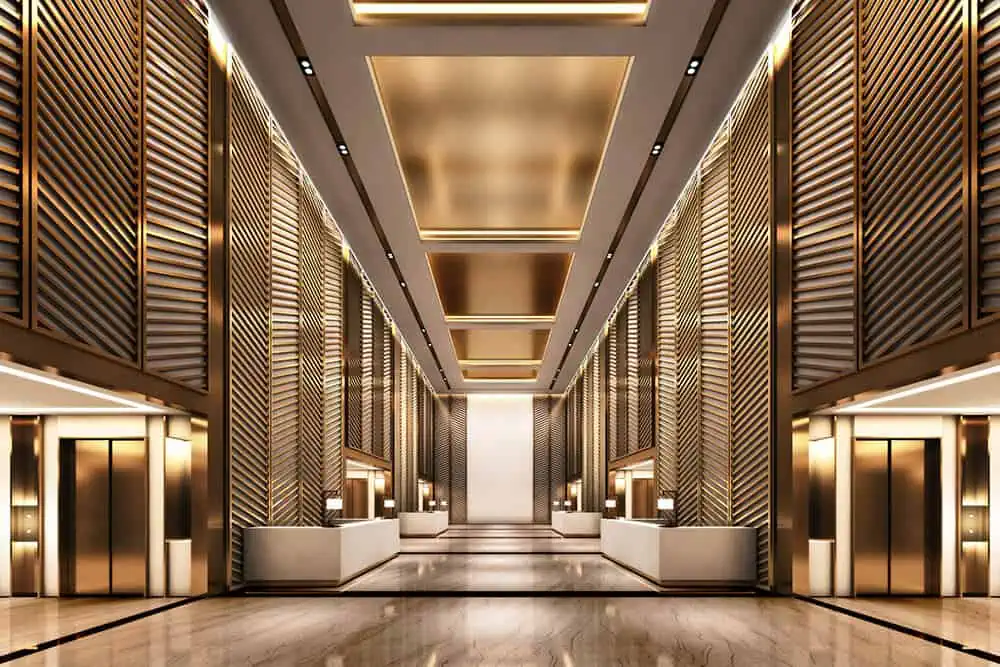
10 TIPS FOR HOTEL LIGHTING
By now, you should know the basics of hotel lighting. To bring even more improvement in the lights of your hotel, follow these tips;
1. Always hire a professional designer for lighting a hotel. They can give a professional opinion on what design will suit the hotel the best.
2. Take full advantage of natural light. Allow natural light to come inside rooms, making the guests feel more active and energetic.
3. The height of the ceiling plays a significant role in determining how a particular fixture can impact the lighting conditions of an area. Your fixture choice will vary significantly based on the height of ceilings in different regions.
4. Pay great attention to the points where lights from different areas overlap. The transition should be smooth and subtle.
5. You can make the lobby area more dramatic by experimenting with vibrant solutions. However, ensure that whatever you do does not compromise the area’s utility.
6. While lighting hallways, staircases, and parking areas, safety should be given higher importance. You do not want the guests to stumble and injure themselves during their stay at your property.
7. Use performance lights such as spotlights in areas dedicated to different events.
8. Some hotels have free-flowing spaces that can be divided into different parts by lighting them differently.
9. While lighting hallways, staircases, and parking areas, safety should be given higher importance. You want the guests to avoid stumbling and injuring themselves during their stay at your property.
10. Hotel lights consume a decent portion of the total energy provided to a hotel. You should pick lights that reduce the cost of energy and consequently decrease operational expenses.
FAQs
Different parts of hotels have varying lighting requirements. Some parts, such as bedrooms, will require lower color temperatures, while areas designated for work will need higher color temperatures. Similarly, the color rendering index requirements of the different areas will also vary.
You can light a room with recessed lights or chandeliers based on the hotel’s theme. Other elements, such as task lights, table lamps, wall lights, and lamp shades, can also be used in rooms.
The hotel industry significantly focuses on ambiance as it drives more guests. In order to create an elegant atmosphere, lighting plays a significant role. Without appropriate lighting, even the bests of the interior will look dull.
Typically, 150 lux light levels work in hotel rooms and bathrooms. However, you can go as high as 500 in rooms covered by task lights.
Conclusion
When it comes to lighting a hotel, it is more than just installing a fixture inside and in the hallways. There are a lot of factors that you must take into account before lighting a hotel. You should understand how much value decent lighting will add to the hotel and pick the solution based on that. The two things you should remember while lighting a hotel is to keep it simple and efficient.
LEDYi manufactures high-quality LED strips and LED neon flex. All of our products go through high-tech laboratories to ensure the utmost quality. Besides, we offer customizable options on our LED strips and neon flex. So, for premium LED strip and LED neon flex, contact LEDYi ASAP!

